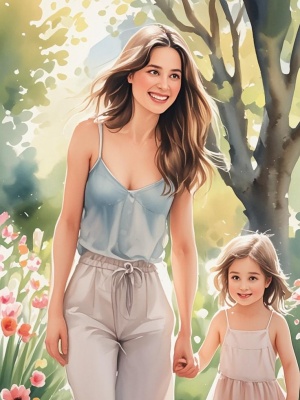The Art of Watercolor Self Portraits: A Complete Guide
Introduction to Watercolor Self Portraits
Watercolor self portraits represent a unique intersection of self-expression and technical skill. Unlike traditional portraits, watercolor techniques bring a special fluidity and emotional depth to self-representation. Artists throughout history, from Albrecht Dürer to contemporary creators, have used this medium to explore their identities. In our AI painting guide, we discuss how technology can assist in this creative process.
The Challenges and Solutions in Watercolor Self Portraits
Problem: Capturing Accurate Skin Tones
Watercolor self portraits present unique challenges in skin tone reproduction. The transparent nature of watercolors makes it difficult to achieve realistic flesh tones without looking muddy.
Solution: Professional artists recommend:
- Using limited palette combinations (typically burnt sienna, yellow ochre, and alizarin crimson)
- Building layers gradually to maintain transparency
- Testing color mixes on scrap paper first
Problem: Maintaining Facial Proportions
Self-portraiture requires working from mirrors or references, which can distort proportions. The portrait to art conversion process shows how digital tools can help with this challenge.

Solution: Effective techniques include:
- Using the grid method for accurate scaling
- Taking reference photos from multiple angles
- Regularly stepping back to check proportions
Advanced Watercolor Techniques for Self Portraits
Wet-on-Wet vs. Wet-on-Dry Approaches
The choice between these fundamental watercolor techniques dramatically affects the outcome of watercolor self portraits. Wet-on-wet creates softer, more atmospheric effects ideal for backgrounds, while wet-on-dry allows for sharper facial features.
Negative Painting for Depth
This advanced technique involves painting around the subject to create form. In watercolor self portraits, it's particularly effective for:

- Defining facial contours
- Creating hair volume
- Suggesting three-dimensional space
Contemporary Approaches to Watercolor Self Portraits
Modern artists are combining traditional watercolor techniques with digital tools. Some create initial sketches using AI text to image generators for composition ideas before painting. Others use digital color studies to plan their watercolor palettes.
Conclusion: The Enduring Appeal of Watercolor Self Portraits
Watercolor self portraits remain a powerful medium for artistic self-exploration. Their unique combination of technical challenge and expressive potential continues to attract artists at all levels. Whether created traditionally or with modern digital aids, these works capture the essence of the artist in ways no other medium can.
For further inspiration, explore our gallery featuring contemporary watercolor portrait artists. You might also find valuable resources at the Artists Network or Royal Watercolour Society.